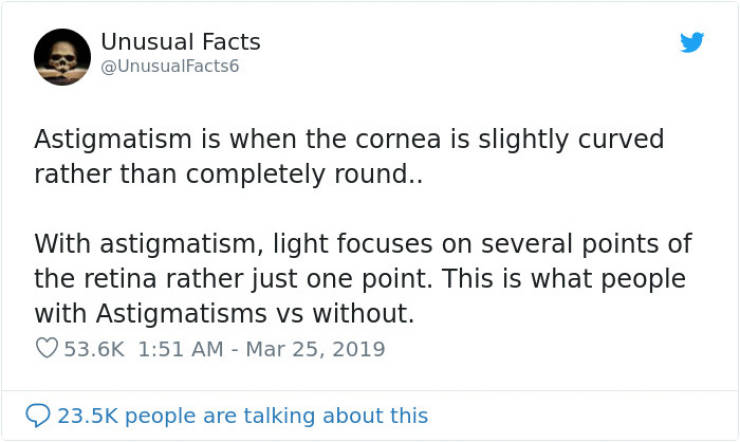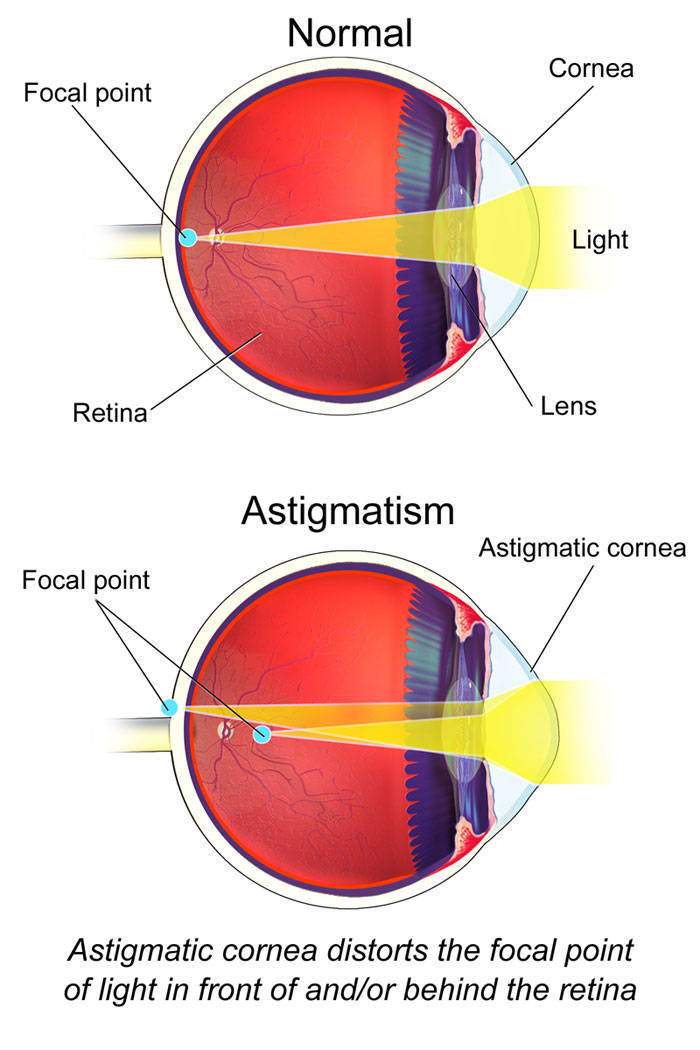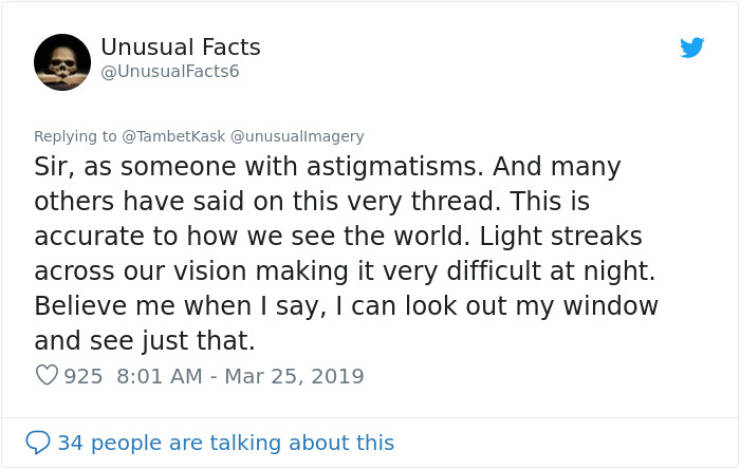An eye-opening tweet went viral that compares the way people with astigmatism view light vs those without
Astigmatism is a refractive condition that occurs when the cornea (the front surface of the eye) or the lens inside the eye has mismatched curves. A normal eye has both the cornea and lens curved in a rounded shape, whereas people with astigmatism have one of these elements in an egg shape. In a perfect eye, the rounded shape of the cornea and lens refract any incoming light to produce a sharply focused image on the retina.
In an eye with a refractive error, the mismatched curves in the eye prevent the light rays from bending properly. The result is a blurry image. There are two different types of astigmatism: corneal astigmatism, where the mismatched curves occur in the cornea, and lenticular astigmatism where the curves in the lens are mismatched. Both cause blurry vision but can occur more horizontally, vertically or diagonally. This condition is most commonly present combined with another refractive error like nearsightedness (myopia) or farsightedness (hyperopia).
Blurry vision is not the only symptom of astigmatism, people with this condition can also experience eyestrain or discomfort, headaches, difficulty seeing at night. Some people are born with astigmatism and may not know they have it until they are screened for it during an eye test. People who discover they have astigmatism can still live relatively hassle-free lives. The most common way to treat the symptoms for astigmatism are glasses, contact lenses, and refractive surgery.
Refractive errors are the most common of the ocular problems among all age groups. According to studies and reports from the World Health Organization, they are also the first cause of visual impairments and the second cause of visual loss worldwide, as 43% of global visual impairments are due to refractive errors. Uncorrected refractive errors were the cause of blindness in 6.8 million people in 2010 worldwide. In the United States astigmatism occurs in 1 out of 3 people.
People in the comments with astigmatism were surprised by the contrast
While having an eye condition may seem like a great impairment it didn’t stand in the way for many great artists.
Painter, architect, and sculptor El Greco of the Spanish Renaissance (1541-1614) is believed to have had astigmatism. The artist was known for drawing elongated figures in his paintings which ophthalmologist Germán Beritens argued in 1913 was due to his refractive condition. A more substantial example is that of Claude Monet who was diagnosed with cataracts, a condition that clouds the eyes and vision, impairs color discrimination, and impairs detail – all of which were evident in his work.




















